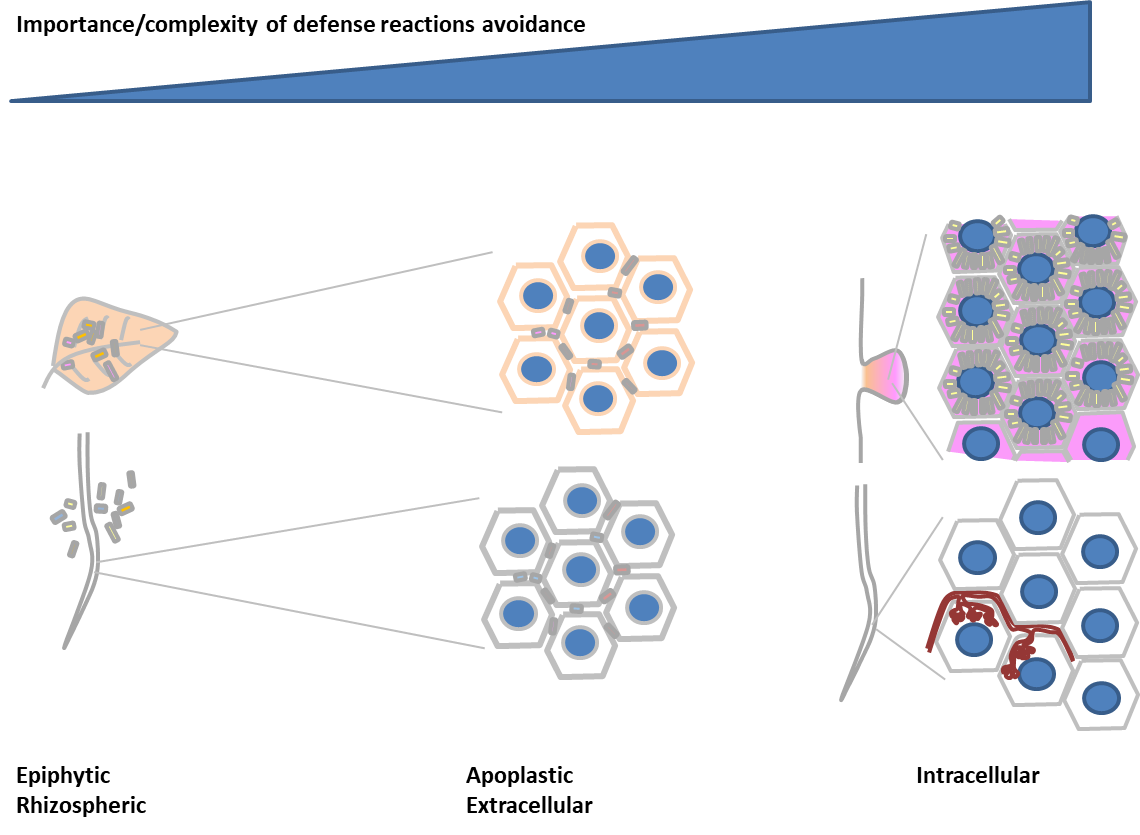Defenses and beneficial interactions
Avoidance of detrimental defense responses in beneficial plant-microbe interactions
Plants live in the presence of a very diverse microbial world. While the majority of these organisms do not interact with plants, others are beneficial or pathogenic. To manage appropriate responses, evolution has improved plant tolerance to beneficial microbes while retaining the ability to recognize pests and develop defense responses. In a review published in Current Opinion in Biotechnology, Benjamin Gourion (Université de Toulouse) and Pascal Ratet (Institut des Sciences des Plantes - Paris-Saclay - IPS2, CNRS/INRAE/UPSaclay/UEVE, Gif-sur-Yvette) review the mechanisms involved in these interactions.
The review first briefly describes the different physical and chemical barriers used for plant defenses, the mechanisms of pathogen perception, as well as the levels of defense required depending on the intimacy of the plant-microorganism association. The review then shows that defense reactions can be elicited by the symbiotic partners. Taking the example of the legume-rhizobium symbiosis, the different types of control of defense reactions by the plant itself or the bacterial partner are described. In the particular case of this symbiosis, the formation of a dedicated organ allows the plant to maximize the symbiotic infection locally. The multiplicity of interactions that can be beneficial or pathogenic on the same tissue is discussed and methods appropriate for these studies are proposed. Finally, the question is raised on how to use the mechanisms identified to increase resistance to pathogens without losing the ability to establish beneficial interactions.

October 14, 2021
